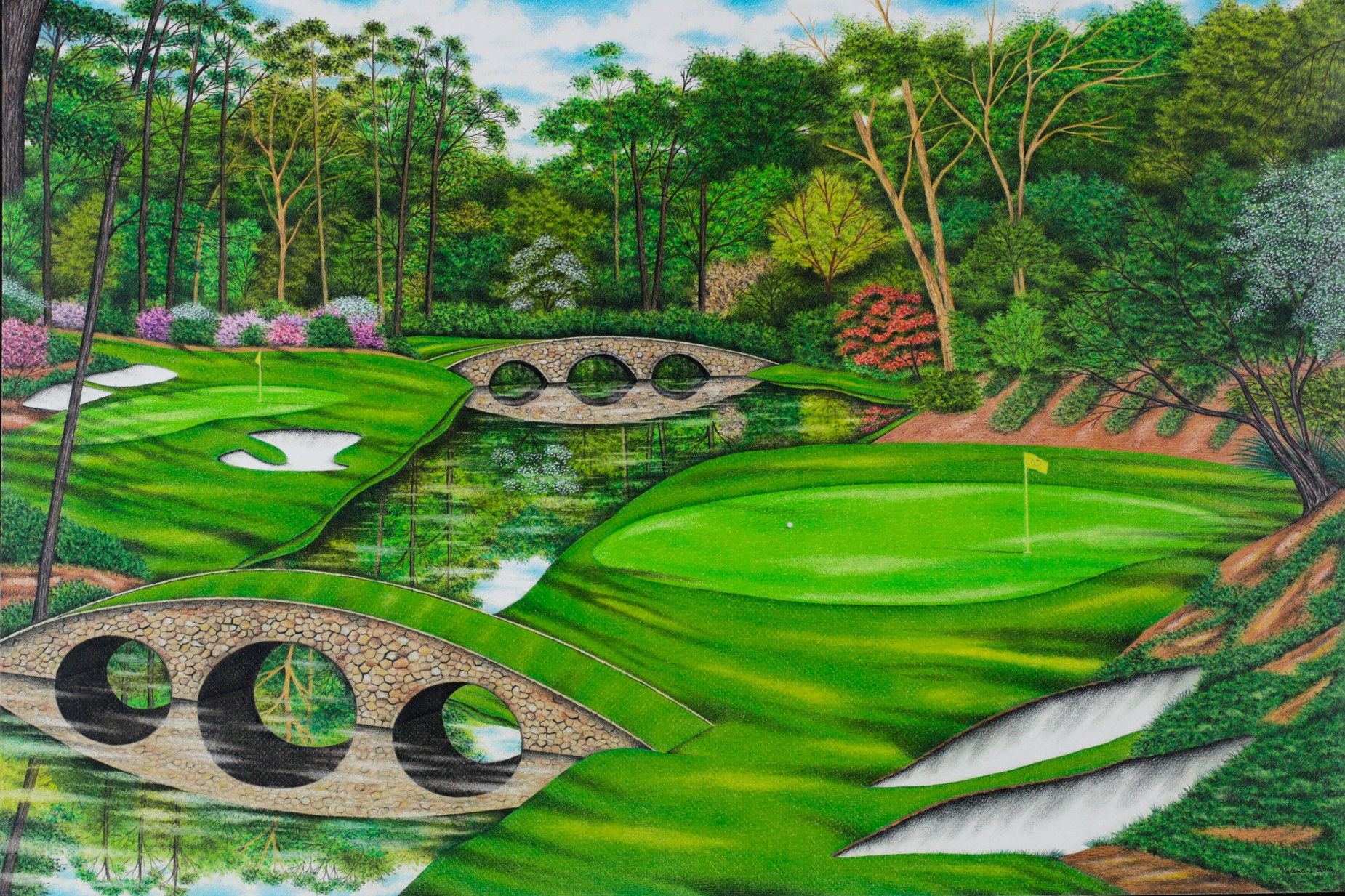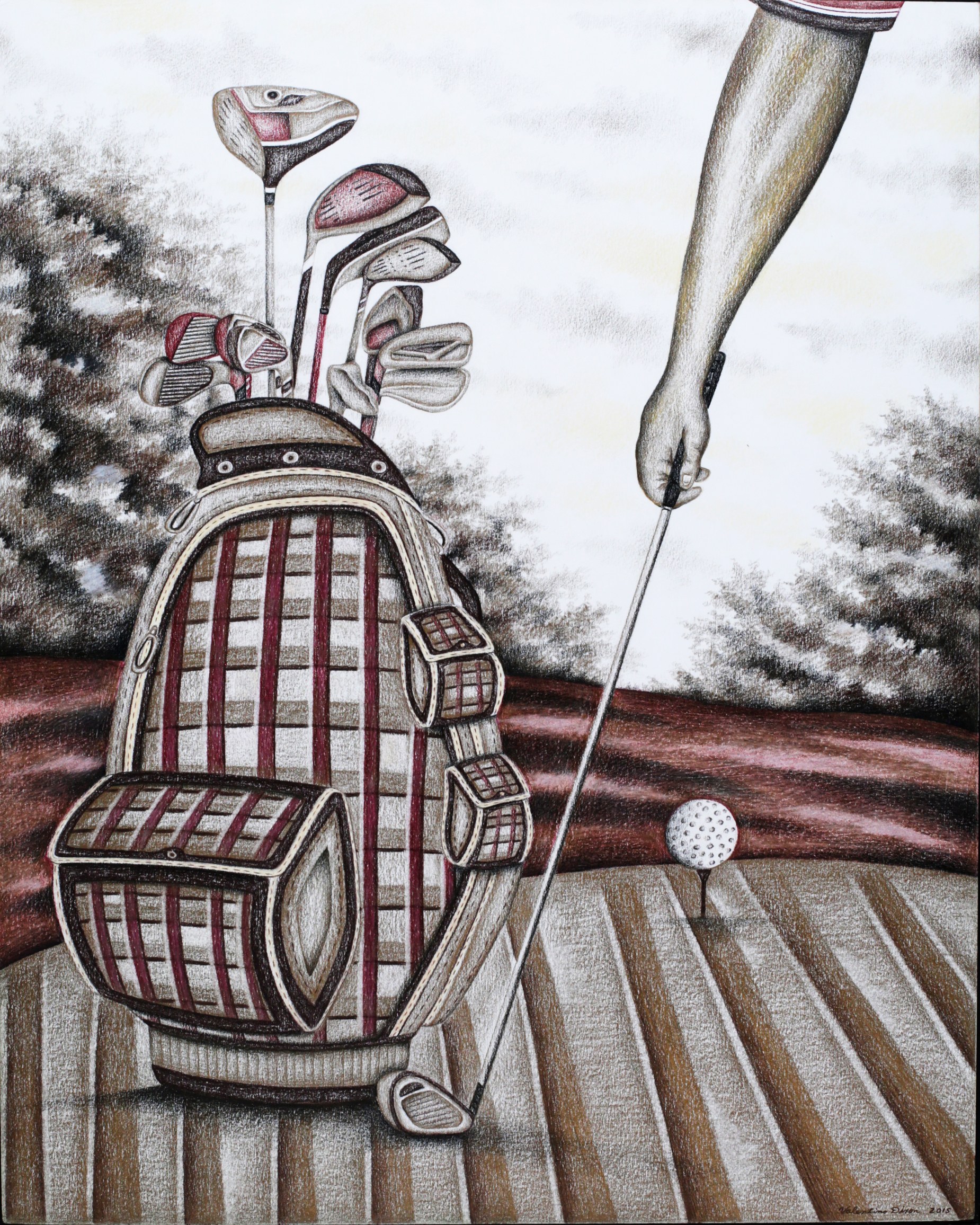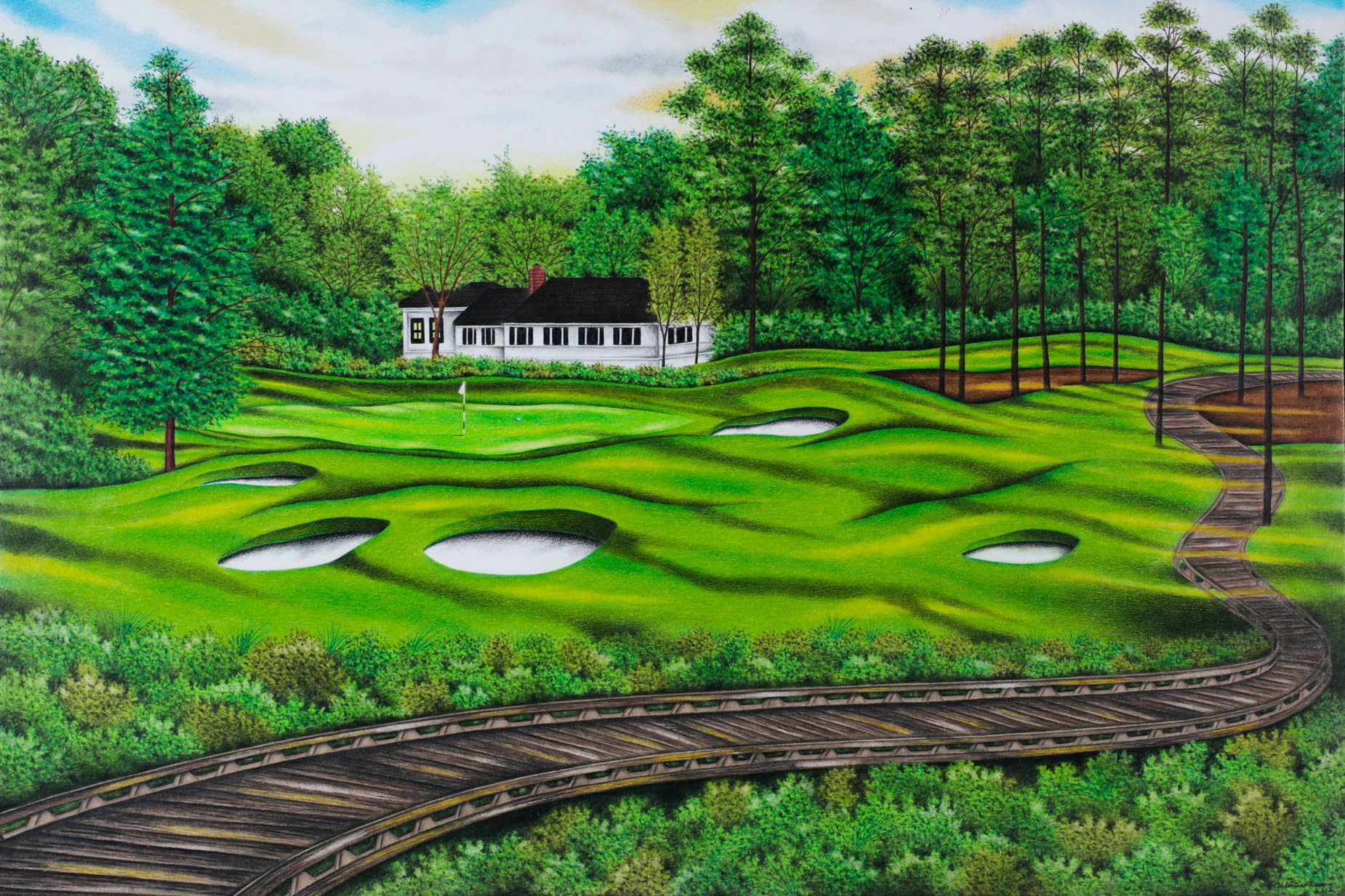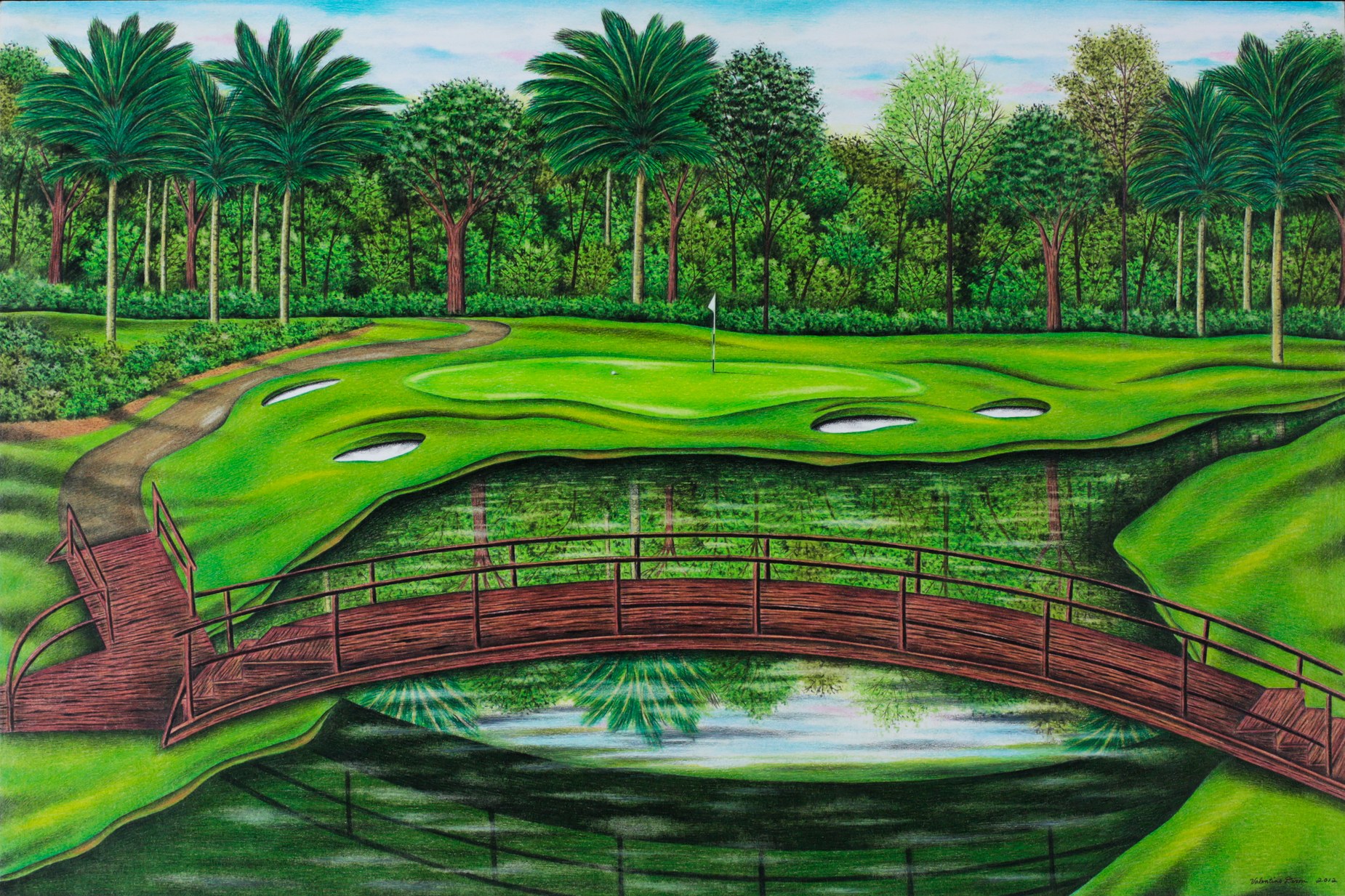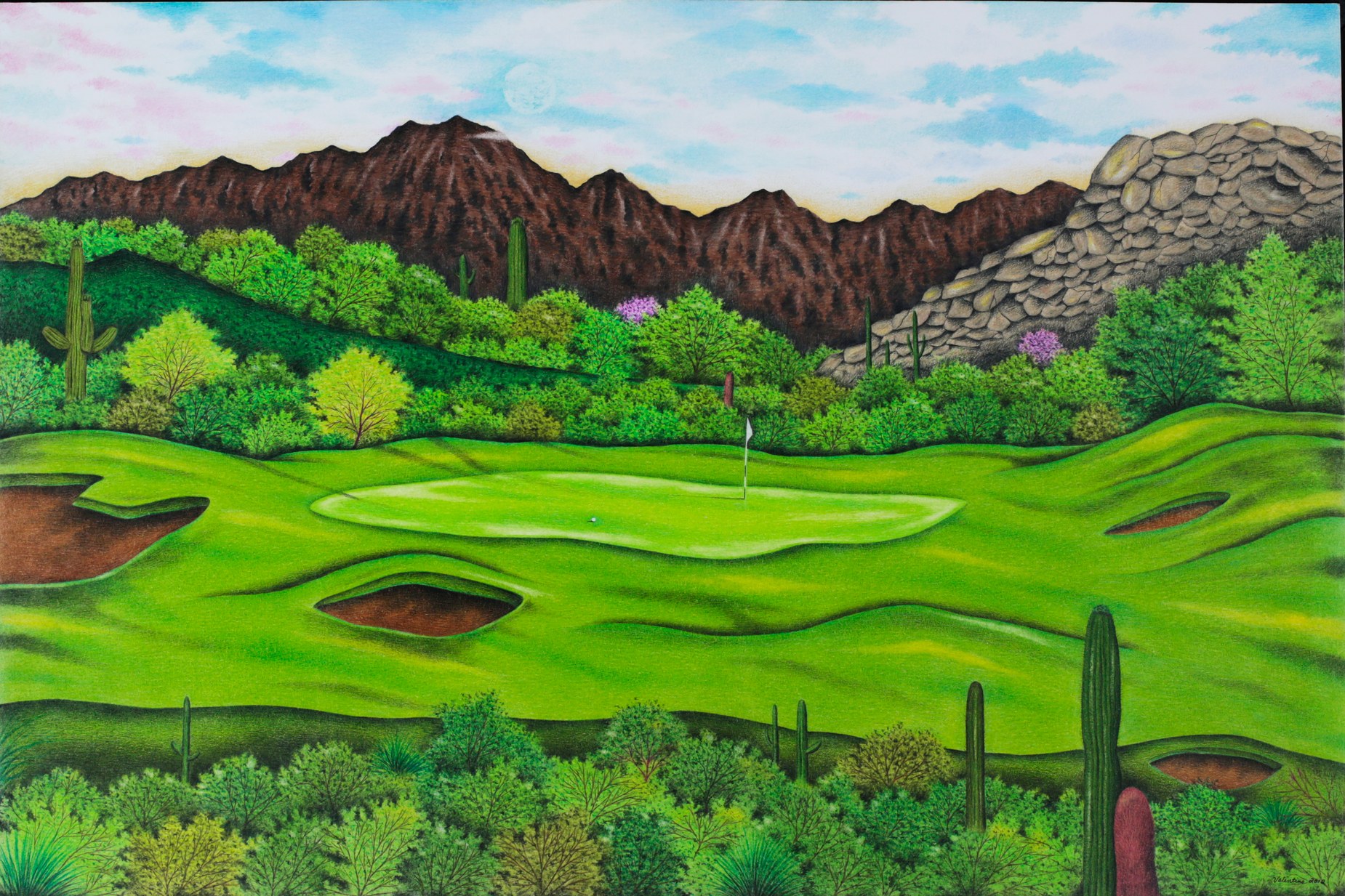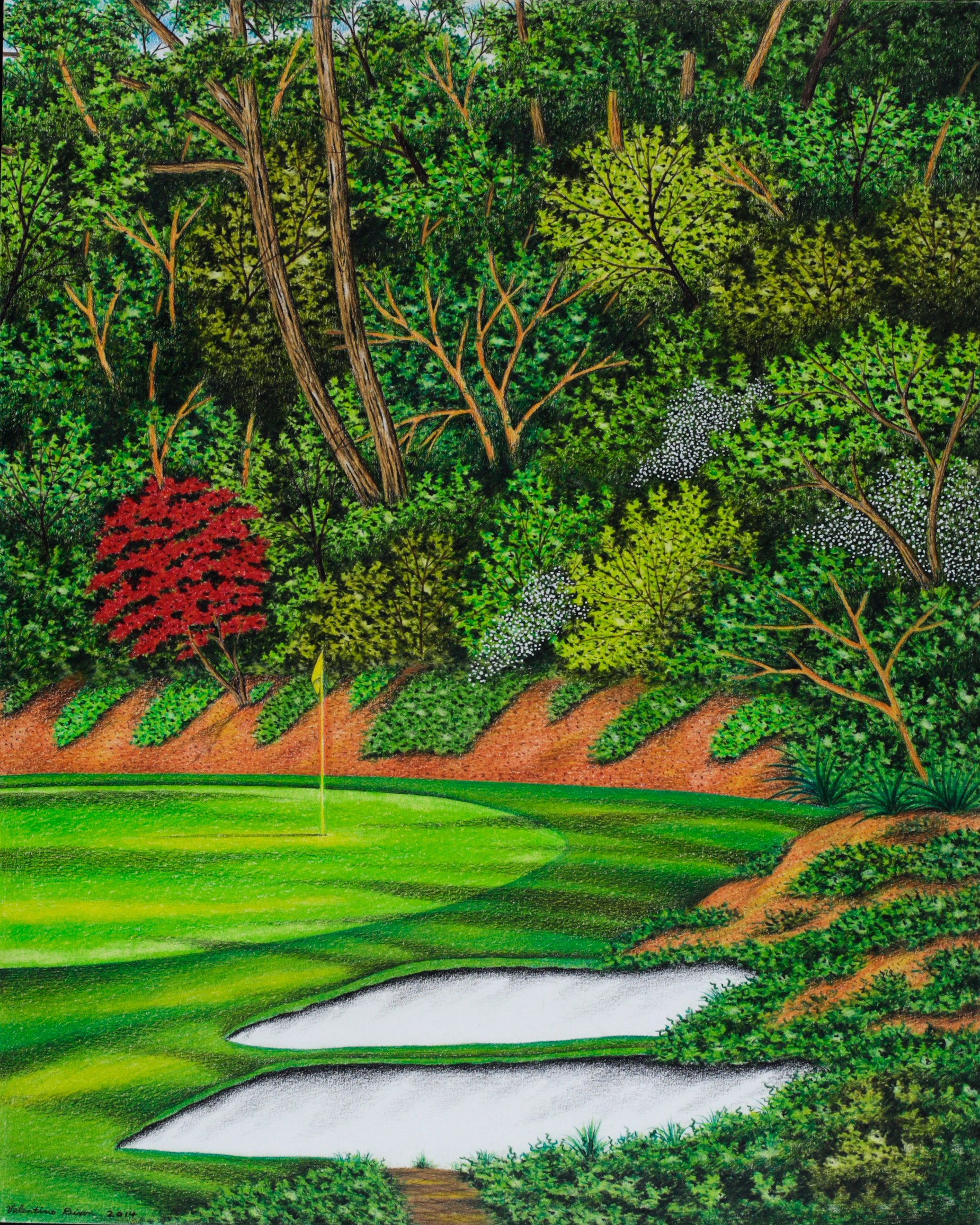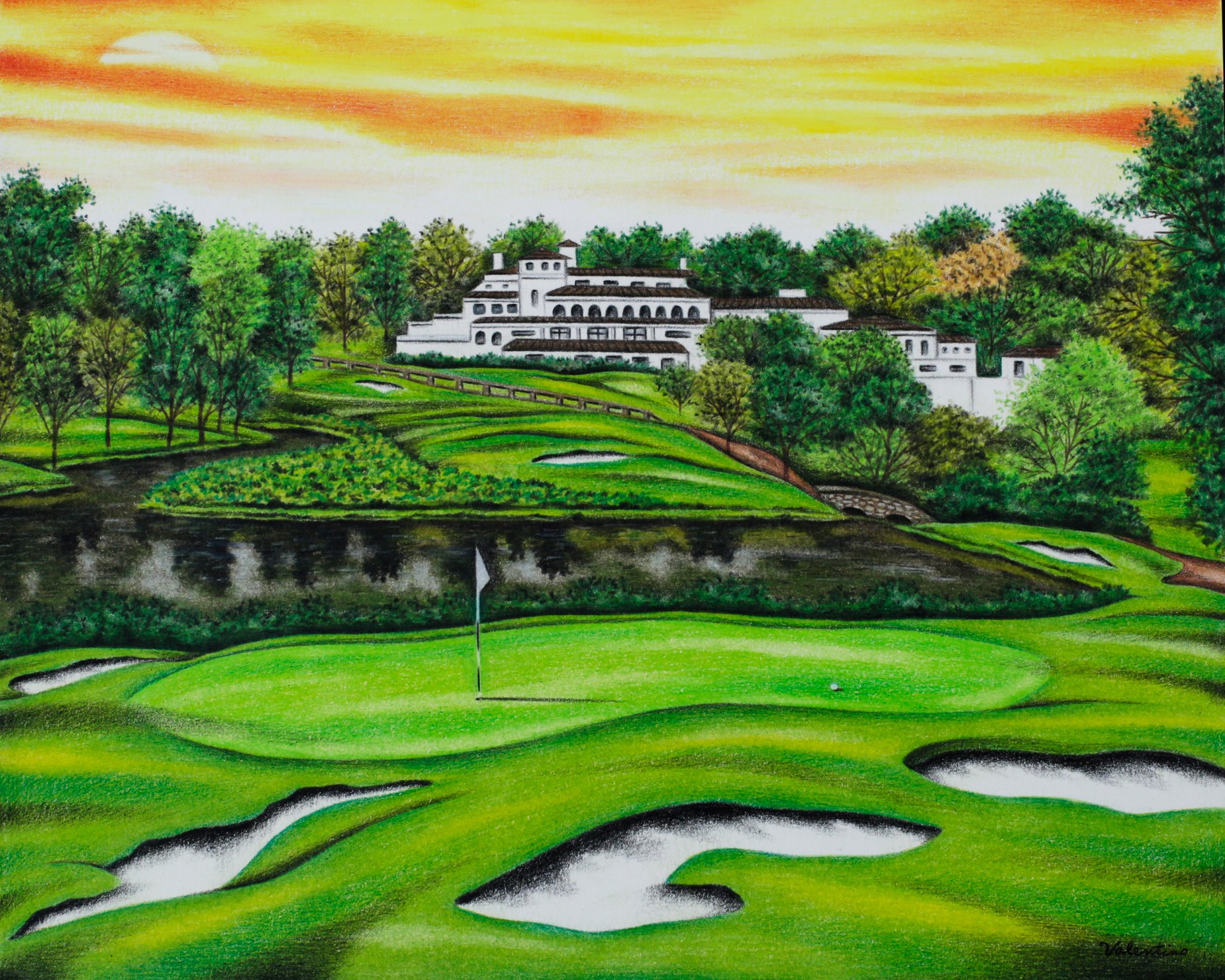The golf world Valentino Dixon imagined from behind bars.
By Max Adler
Perhaps you’ve already heard the backstory of Valentino Dixon’s artwork. That the man who spent 27 unjust years behind bars, exonerated this week, got into the game when golfing Attica warden James Conway brought in a photograph of Augusta National’s 12th hole for the inmate to render as a favour. Remarkably, the peace and possibility of golf somehow spoke to Dixon. Here is a collection of some of his work.
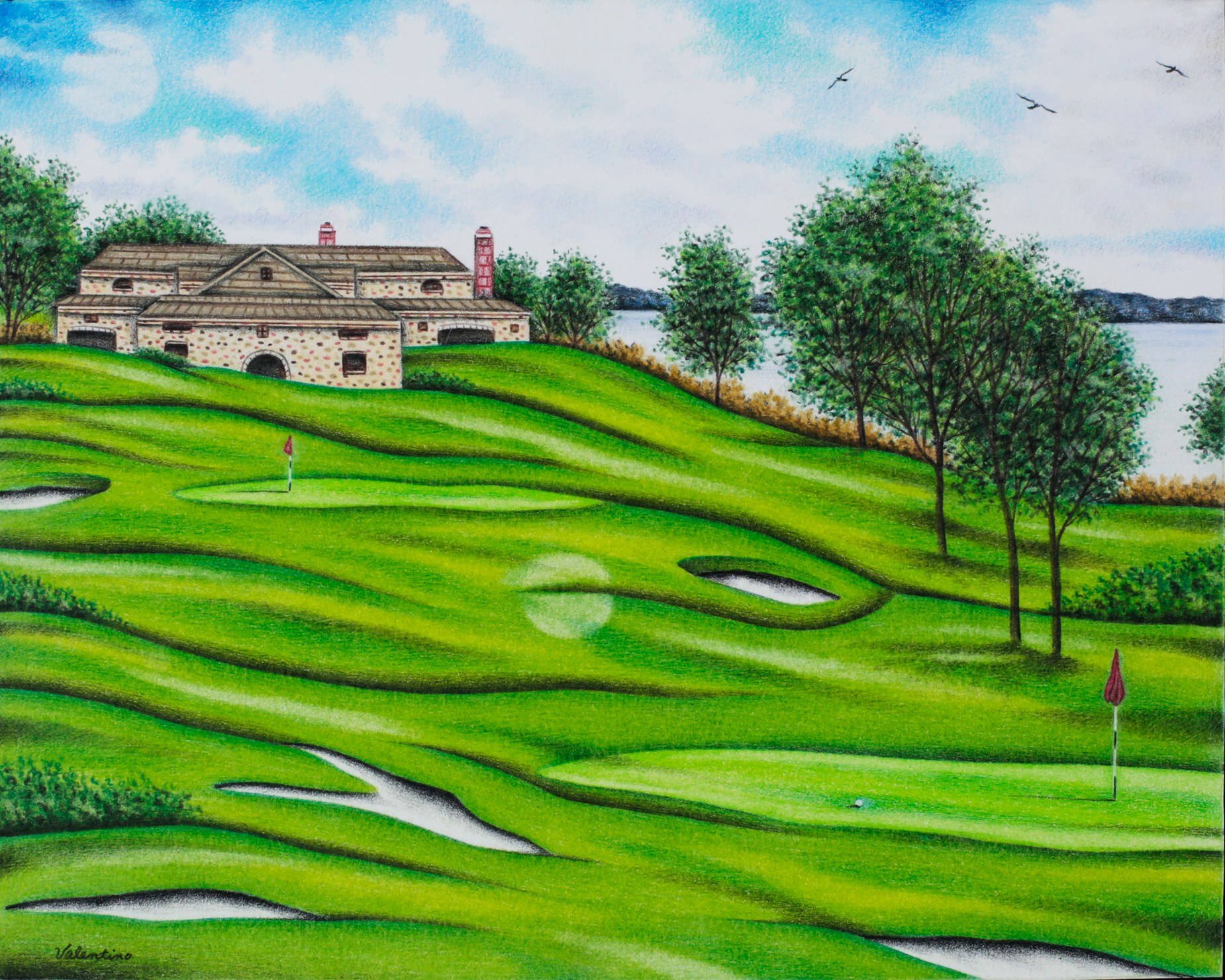
Valentino Dixon regularly mailed me his drawings over the past six years. Sometimes I mailed him copies of Golf Digest to use as reference material, but Dixon would also concoct golf scenes by extrapolating around something as simple and small as the flower on a stamp. They are made of layer upon exacting layer of colored pencil (Attica inmates are not allowed to have paint). All of his drawings are on paperboard, and the largest panels he uses are 30-inches by 20-inches; the smallest 7-inches by 9-inches. The constraints of his cell prevented him from going bigger. However, to subvert this limitation, a few times he made composites, where as many as nine paper boards fit together like a puzzle to form a massive 5-feet square image.
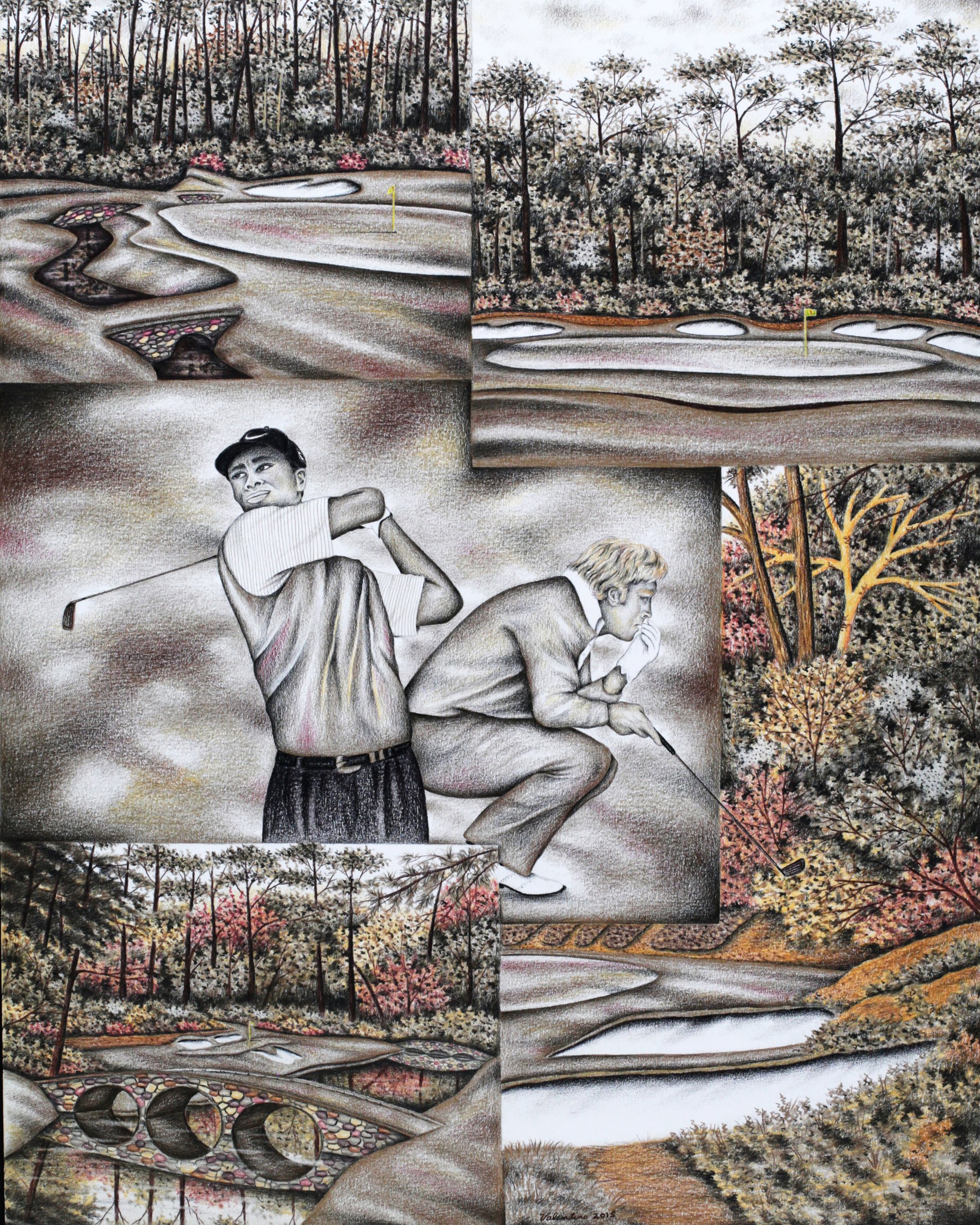
It almost needn’t be said, but the drawings are imbued with the weight of the place of their making. You can’t really see them without also seeing Dixon on the floor in his windowless cell, the unceasing clamor of vicious criminals and guards and slamming steel all around him. And after 10 hours of intense concentration, the artist laying his head on a bed without a pillow.
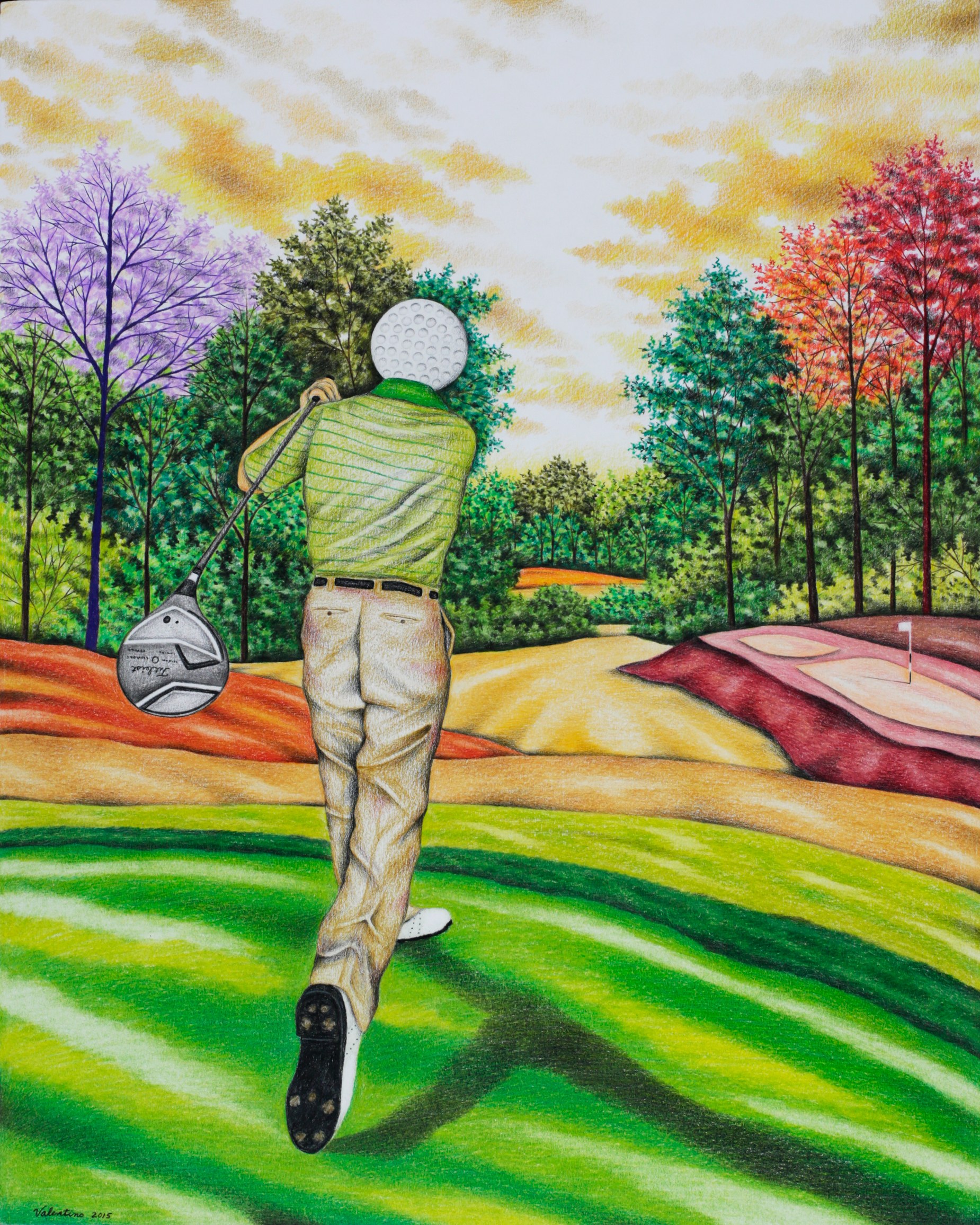
Despite being a lover of both golf and art, there’s not much golf art I like. A lot of it I find a bit cloying. But maybe because Dixon has never been on a golf course, never seen one in real life, his work is different. The look of a Dixon golf hole is surreal, dreamy, of another world. And against all odds and reason, his world is a magical one.
